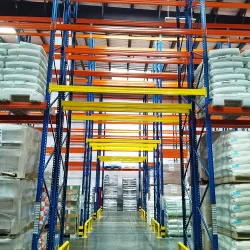What is difference between racks and shelves?
2023-10-21
Racks and shelves are storage structures designed to hold and organize items, but they have some key differences in their construction and functionality:
Shelves:
1. Horizontal Platforms: Shelves are essentially horizontal platforms with one or more surfaces that are typically made of wood, metal, glass, or other materials.
2. Supports: Shelves are supported by vertical structures, which can be walls, brackets, or vertical standards attached to a wall. They may also be freestanding with their own supporting legs or posts.
3. Spacing: Shelves are generally evenly spaced to accommodate items of various sizes. The spacing between shelves can often be adjusted to accommodate taller or shorter items.
4. Load Capacity: Shelves are designed to hold a specific amount of weight, depending on the material and construction. Lighter materials may not support heavy loads.
5. Usual Applications: Shelves are commonly used for storage in homes, offices, libraries, and stores. They are versatile and come in various designs and styles to match interior décor.
Racks:
1. Framework: Racks are essentially frameworks or structures with horizontal or angled surfaces designed for specific purposes. These surfaces may be shelves, bars, hooks, or other configurations.
2. Supports: Racks often consist of a framework with multiple horizontal or angled surfaces. They can be freestanding or mounted to walls or ceilings. Racks may also have side supports or vertical posts.
3. Specialized Use: Racks are often designed for specific applications. For example, there are wine racks for storing wine bottles, coat racks for hanging coats, and server racks for organizing computer equipment.
4. Load Capacity: Racks are typically designed to handle specific items or goods. For example, a warehouse pallet rack is designed to store and organize pallets of products, so it must be capable of supporting heavy loads.
5. Commercial and Industrial Use: Racks are commonly used in commercial and industrial settings for specific storage and organizational needs. They are less versatile for general storage but highly efficient for their intended purpose.
In summary, the primary difference between racks and shelves lies in their design and functionality. Shelves are horizontal platforms supported by vertical structures, suitable for general storage in homes and offices. Racks, on the other hand, are often specialized structures with specific horizontal or angled surfaces designed for particular purposes and are commonly used in commercial and industrial settings.



